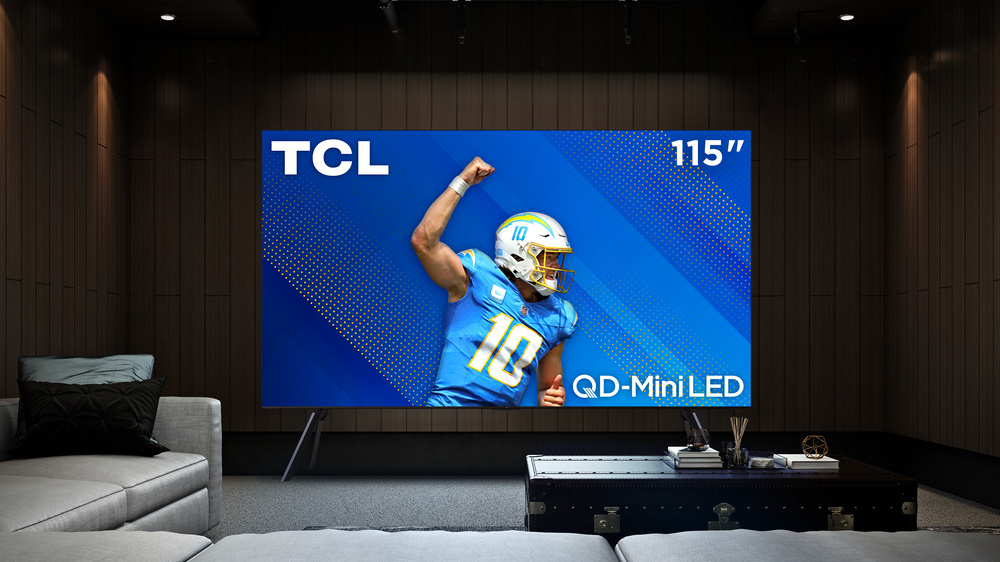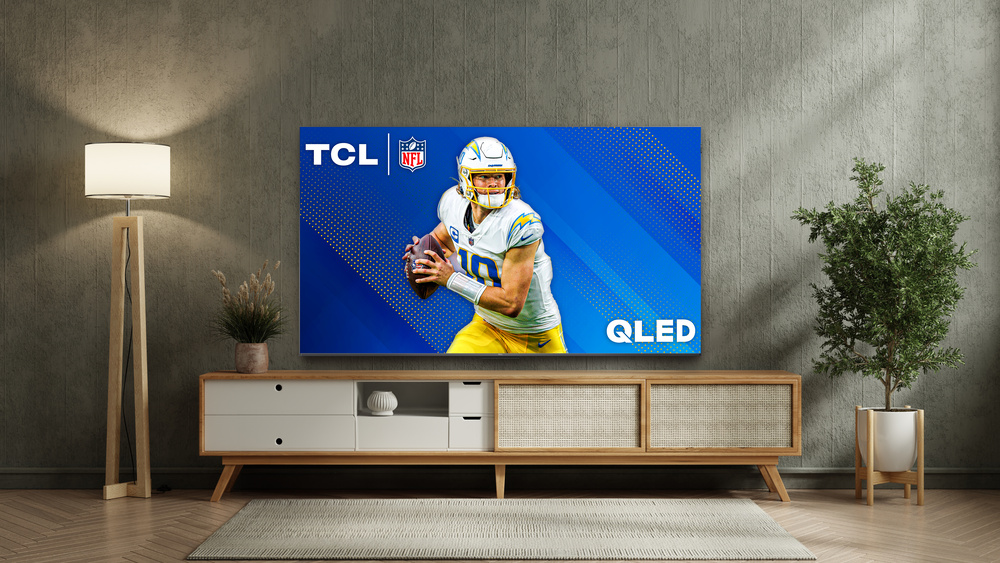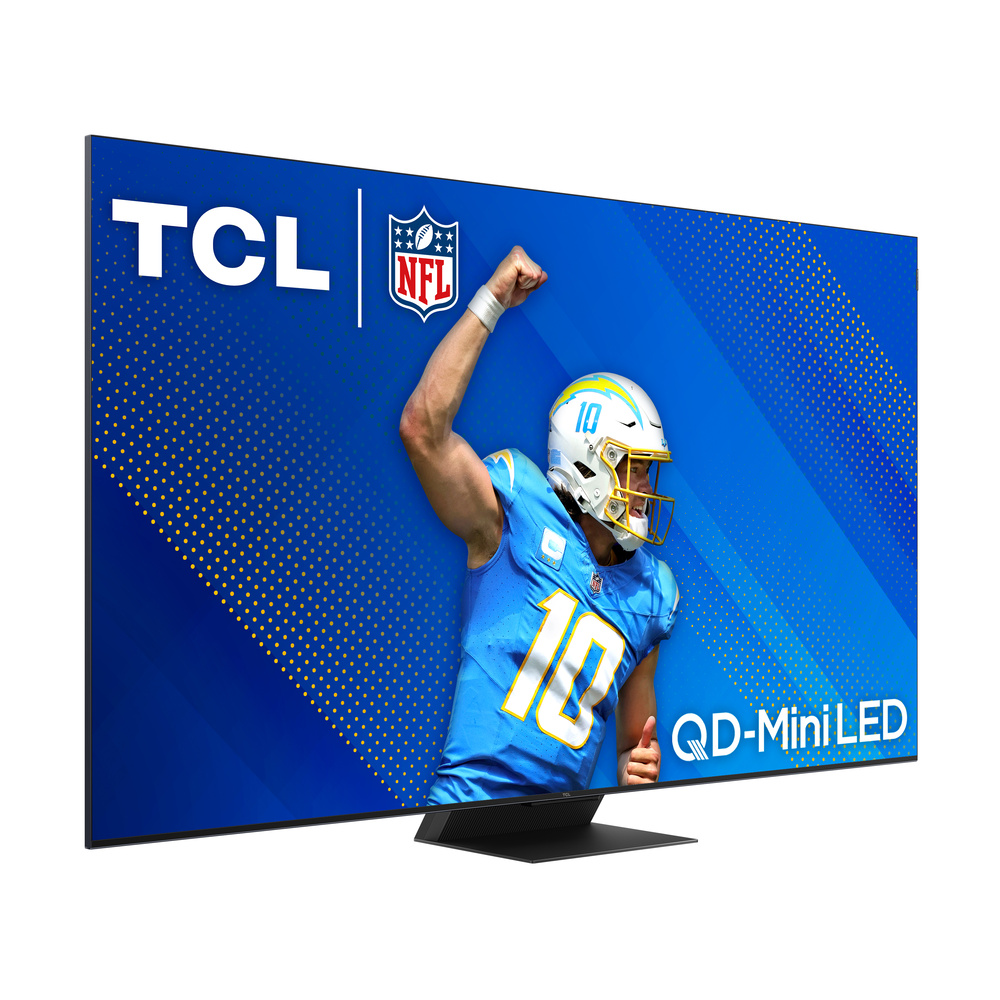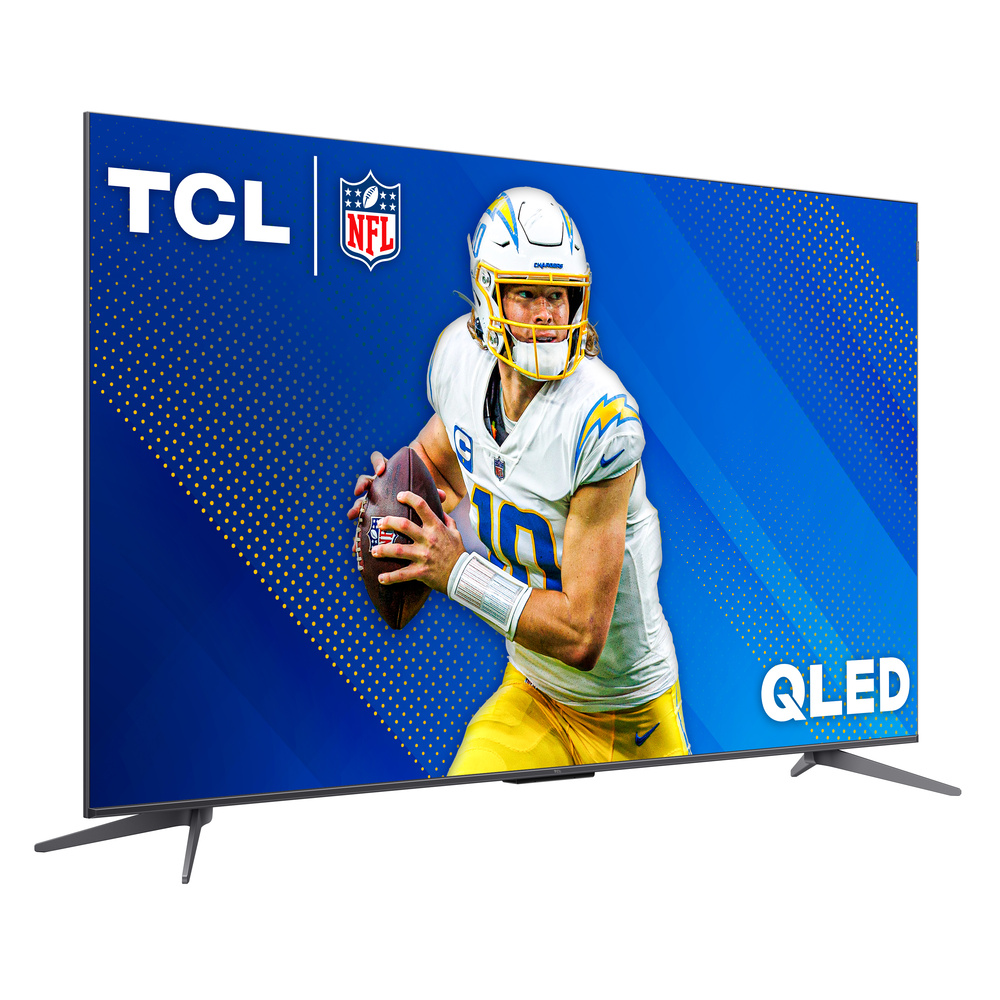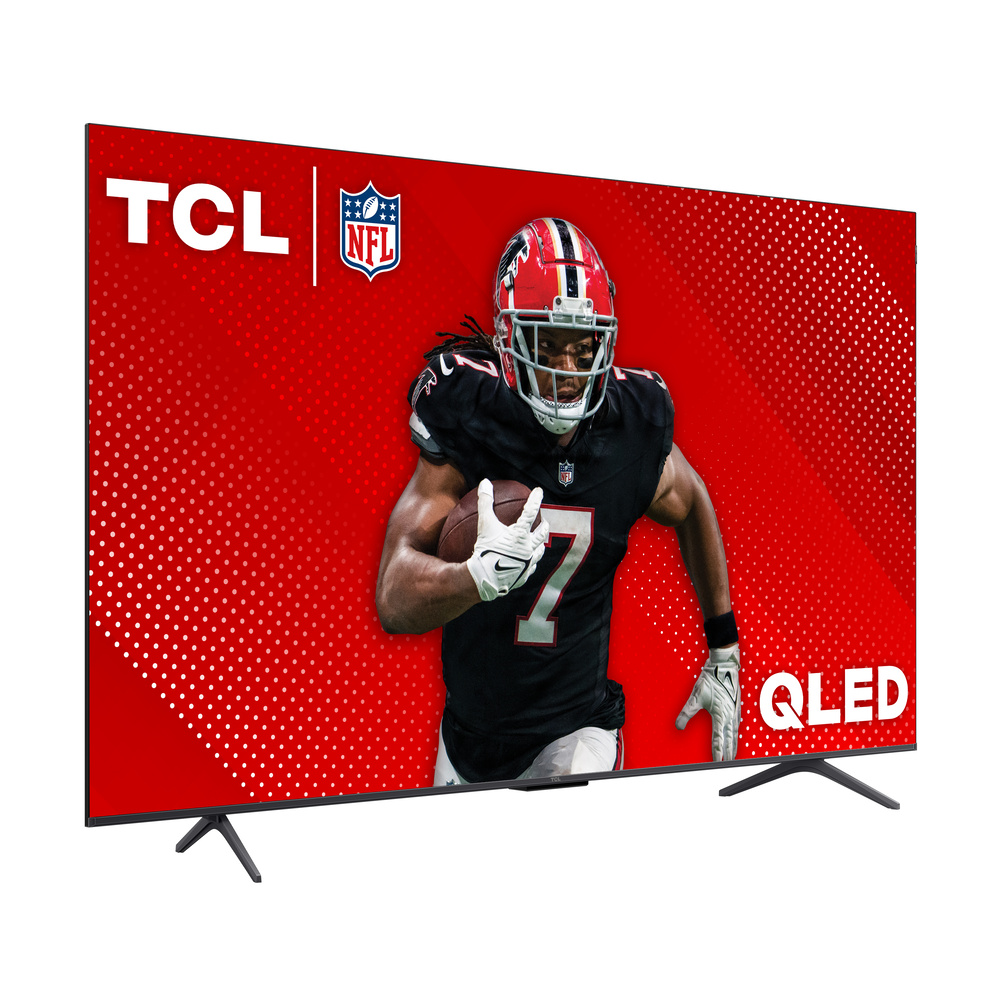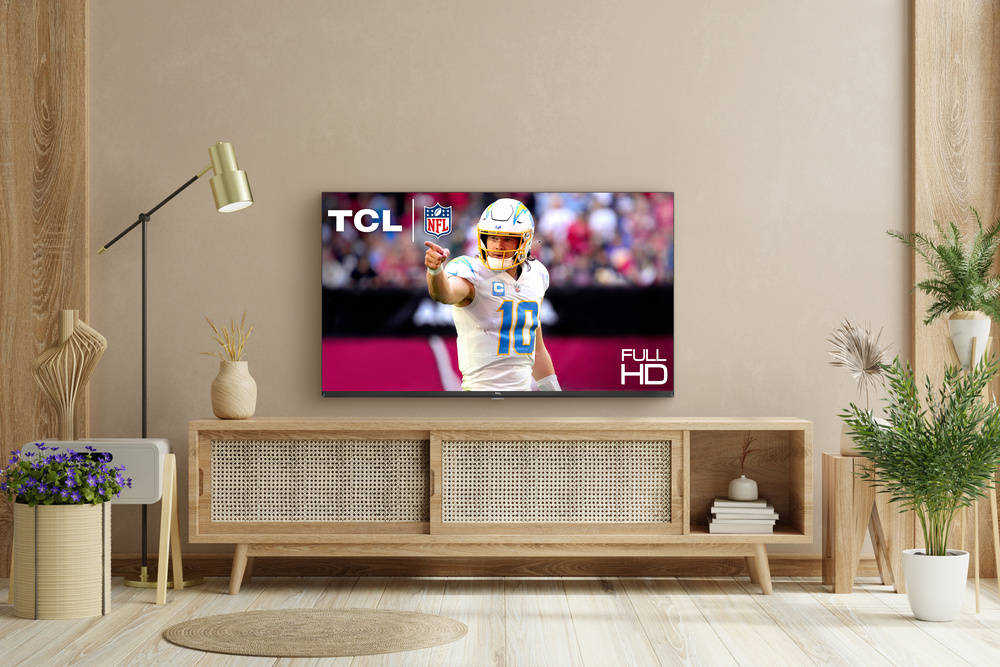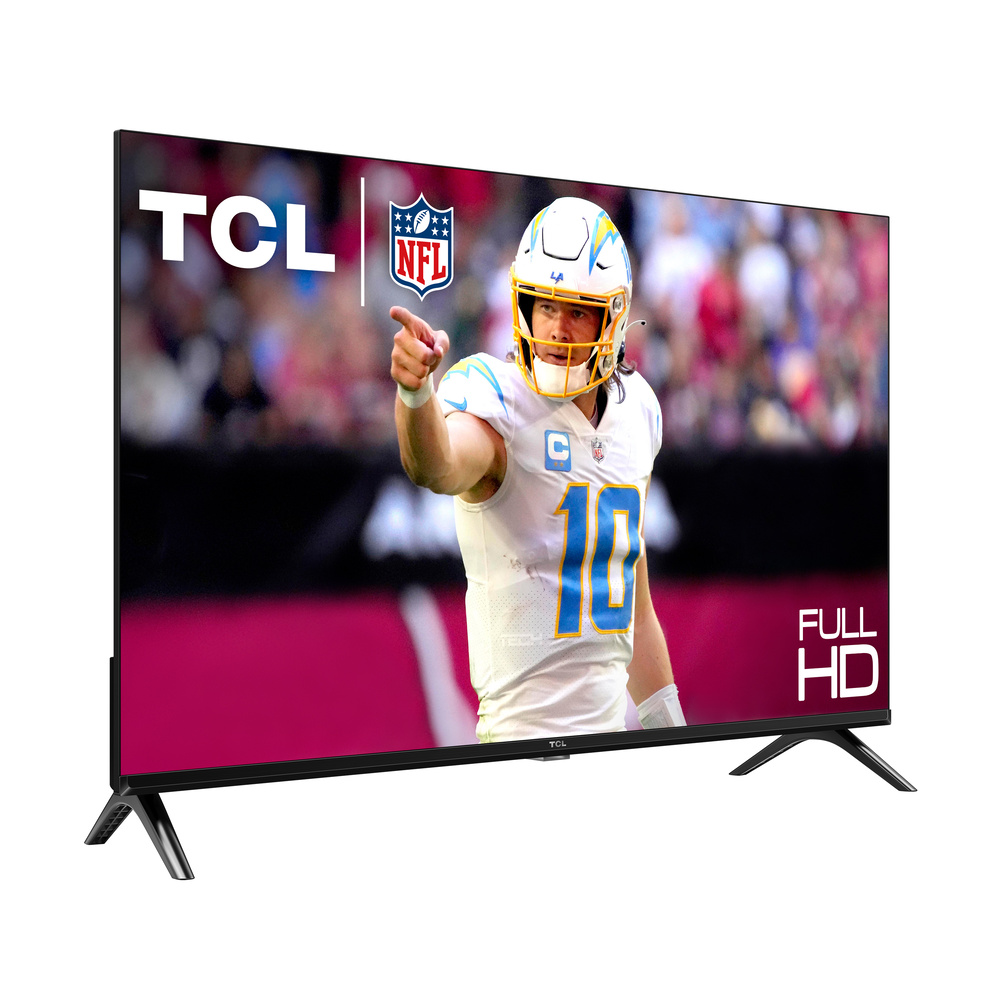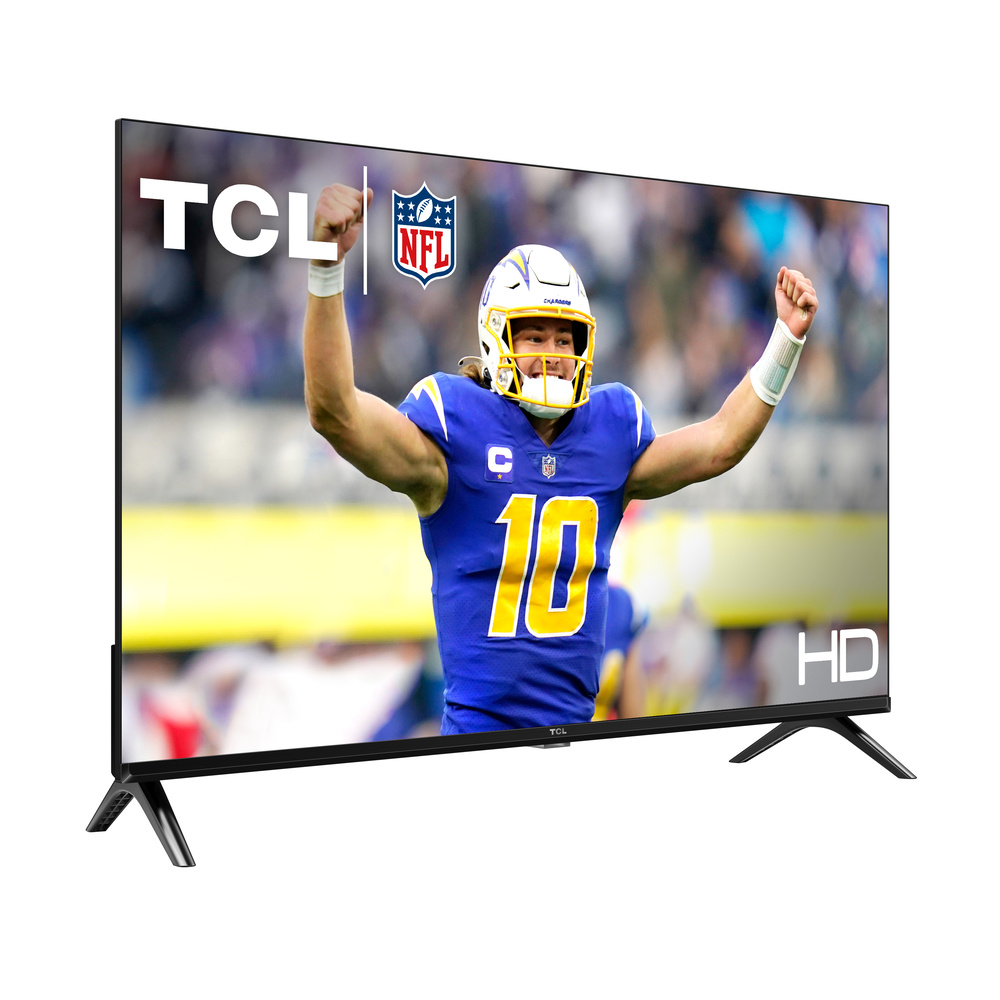Although TCL previously announced most of their 2024 lineup at CES 2024, they unveiled the full details on all their new (and returning) models at a press briefing on May 6th. There were few new surprises, with TCL's lineup this year focusing heavily on their Q Series QD-Mini LED (as they call it) models. TCL is also heavily marketing their new larger sizes, up to an impressive 115" that certainly won't fit in most living rooms, down to three more manageable 98" models that are among the cheapest, most advanced large TVs on the market.
Overview
TCL's lineup in the United States is usually smaller than that of other brands. TCL is among the few brands to announce a good mix of premium, high-end TVs and smaller budget models for their 2024 lineup. Their 2024 lineup is split in two this year, between the Q Series and the S Series, making it easier for users to identify where each model sits. TCL is also heavily investing in large TVs, with three new 98" TVs and a massive new 115" model.
| Model | Sizes | Backlight Type | Advertised Zones | Resolution |
|---|---|---|---|---|
| QM891G | 115" | Mini LED | 20,000 | 4k |
| QM851G | 65", 75", 85", 98" | Mini LED | Up to 5,000 | 4k |
| QM751G | 55", 65", 75", 85", 98" | Mini LED | Up to 1,500 | 4k |
| Q681G | 85" | LED Full Array | Unknown | 4k |
| 55", 65", 75" | LED Full Array | Unknown | 4k | |
| Q651G | 85", 98" | LED | No Local Dimming | 4k |
| 43", 50", 55", 65", 75" | LED | No Local Dimming | 4k | |
| S551G | 43", 50", 55", 65", 75", 85" | LED | No Local Dimming | 4k |
| S350G (carry-over) | 32", 40", 43" | LED | No Local Dimming | 1080p |
| S250G (carry-over) | 32" | LED | No Local Dimming | 720p |
We'll get into the fine details of each model later, but here's a brief overview of what TCL has planned for 2024. There are a few carry-overs from last year in the S Class, but as you can see, TCL plans to release six new TVs this year, ranging from the budget S551G to the visually stunning and incredibly large 115" QM891G. Regarding features, there are very few surprises here; TCL is continuing with the Google TV smart interface instead of Roku. Most of the high-end lineup supports up to 144Hz when used with VRR, and they support AMD FreeSync Premium Pro, making them great choices for gamers. TCL has also integrated custom installation capabilities into all of their new models, allowing home theater integrators to incorporate the TV into a fully automated home theater setup through discrete IR codes, IP control, and Control4 home automation compatibility.
Through TCL's Pangu Laboratory, TCL has developed advanced new technologies to improve the picture quality and performance of their TVs. TCL is focusing on three main optical components this year. Their new HEXA Mini LED chip is an integrated circuit that controls and drives the individual dimming zones. This chip is largely responsible for the higher peak brightness and finer dimming control possible on the new QM7 and QM8 lineups. TCL has also developed a new optical lens, which they claim improves image uniformity by providing more even light distribution. Finally, TCL's ODR LED technology reduces the distance between the light guide and the reflector.
The top three models all use Mini LED backlights with impressive zone counts, from 1,500 on the QM751G up to an incredible 20,000 zones on the 115" QM8. The improvements to TCL's local dimming technology mentioned above have been integrated into the QM7 and QM8. These improvements should result in a much better local dimming experience, with less blooming around bright objects and less noticeable zone changes.
Q Class Lineup
TCL's highest-end TVs, known as the Q Class, all feature a wider color gamut than traditional LED TVs. Most offer full array or Mini LED local dimming backlights, which TCL is now calling "QD Mini-LED," and are mainly available in large TVs 55" and up, up to a massive 115" model this year. Featuring TCL's most advanced picture and motion processing, these TVs are intended for users who care about picture quality or are looking for the best gaming features available on the market.
| Q651G | Q681G | QM751G | QM851G | QM891G | |
|---|---|---|---|---|---|
| Sizes | 43", 50", 55", 65", 75", 85", 98" | 55", 65", 75", 85" | 55", 65", 75", 85", 98" | 65", 75", 85", 98" | 115" |
| Picture Quality | |||||
| Backlight Type | LED | LED Full Array | Mini LED | Mini LED | Mini LED |
| Advertised Max Peak Brightness | Unknown | 600 cd/m² | 2,400 cd/m² | 5,000 cd/m² | 5,000 cd/m² |
| Advertised Zones | No Local Dimming | Unknown | Up to 1,500 | Up to 5,000 | 20,000 |
| Resolution | 4k | 4k | 4k | 4k | 4k |
| Native Refresh Rate | 60Hz (85", 98" - 120Hz) | 60Hz (85" - 120Hz) | 120Hz | 120Hz | 120Hz |
| Max VRR Refresh rate | 60Hz (85", 98" - 144Hz) | 60Hz (85" - 120Hz) | 144Hz | 144Hz | 144Hz |
| Picture Processor | AiPQ | AiPQ | AiPQ PRO | AiPQ PRO | AiPQ Ultra |
| Wide Color Gamut | QLED PRO | QLED PRO | QLED ULTRA | QLED ULTRA | QLED ULTRA |
| Inputs | |||||
| HDMI Ports | 3 (85", 98" - 4) | 3 (85" - 4) | 4 | 4 | 4 |
| AV Input | 3.5mm adapter required | 3.5mm adapter required | 3.5mm adapter required | 3.5mm adapter required | 3.5mm adapter required |
| Ethernet | 1 | 1 | 1 | 1 | 1 |
| Wi-Fi | Wi-Fi 5 (802.11ac) | Wi-Fi 5 (802.11ac) | Wi-Fi 5 (802.11ac) | Wi-Fi 6 (802.11ax) | Wi-Fi 6 (802.11ax) |
| Tuner | ATSC 1.0 | ATSC 1.0 | ATSC 1.0 | ATSC 3.0 | ATSC 3.0 |
| Features | |||||
| Smart Platform | Google TV 12 | Google TV 12 | Google TV 12 | Google TV 12 | Google TV 12 |
| Game Mode | Yes | Yes | Yes | Yes | Yes |
| Variable Refresh Rate (VRR) | 85", 98" only | 85" only | AMD FreeSync Premium Pro | AMD FreeSync Premium Pro | AMD FreeSync Premium Pro |
| HDR Formats | HDR PRO+ (Dolby Vision, HDR10+, HDR10, HLG) | HDR PRO+ (Dolby Vision, HDR10+, HDR10, HLG) | HDR PRO+ (Dolby Vision, HDR10+, HDR10, HLG) | HDR PRO+ (Dolby Vision, HDR10+, HDR10, HLG) | HDR PRO+ (Dolby Vision, HDR10+, HDR10, HLG) |
| Audio | |||||
| Speakers | 2 | 2 (85" - 3) | 3 | 2.1.2 | 6.2.2 |
| Audio Power | 30W | 30W (85" - 50W) | 50W | 80W | 120W |
| eARC | 1 | 1 | 1 | 1 | 1 |
QM851G/QM951G
TCL's flagship TV in 2024 is the QM8. Available in two models, the QM851G and the QM891G, TCL is making some very bold claims about the capabilities of this TV. This series's "smaller" version, the QM851G, is available in sizes from 65" up to 98", with up to 5,000 local dimming zones on the largest size. TCL also claims that these TVs can reach up to an impressive 5,000 nits peak brightness. If true, this is an incredible feat of engineering and an amazing achievement by TCL, but most people will never see it. There's next to no content available mastered at such high brightness levels, as even the best mastering monitors on the market currently cap out at 4,000 nits. It can likely only reach 5,000 nits with very small, short flashes of light and only in an inaccurate 'Vivid' mode that boosts highlights much brighter than the content creator intended.
If the 98" QM851G isn't big enough for you, TCL has good news in the form of the massive 115" TCL QM891G, which TCL has dubbed "The Ultimate Home Theater." With up to 20,000 local dimming zones and 5,000 nits of glorious peak brightness, TCL claims that it's effectively free from any blooming or halo effect thanks to the small size of each dimming zone and the other improvements TCL has made to their Mini LED backlight technology. A big picture needs big sound, so TCL has also integrated a new Onkyo 6.2.2 channel speaker system.
Moving on from the backlight features in these two TV models, both versions of the QM8 are incredibly feature-packed in all sizes. They run the Google TV 12 smart interface, which is easy to use and has a massive selection of streaming apps available. The slim design has a very premium look, with nearly imperceptible bezels on all four sides and a thin side profile that looks incredible when wall-mounted. There are also multiple stand options for QM891G, as you can either place it flat on a stand with traditional feet or use the floor stand to lift it off the ground without a separate table or cabinet.
This ultimate home theater TV isn't just for watching movies. Gamers will appreciate its advanced gaming features, including AMD FreeSync Premium Pro support up to 144Hz on all sizes, auto low latency mode, and two high-bandwidth HDMI 2.1 ports, so you can take full advantage of the current gen consoles. Like the 2023 models, two of its inputs are still limited to HDMI 2.0 bandwidth and 4k @ 60Hz, which is disappointing for a TV this premium. Thankfully, the eARC port is on one of the lower-bandwidth ports, so you can still take full advantage of multiple consoles. These are also the only TVs in TCL's lineup to support ATSC 3.0, so you can watch the big game in 4k over the air in select markets, which is great for cord-cutters. If you prefer to stream your favorite shows and movies, it has Wi-Fi 6 (802.11ax) built-in for smooth streaming with no buffering.
Except for the 115" QM891, these models are all available immediately. Pricing at launch (MSRP):
- 65" - $1,999.99
- 75" - $2,699.99
- 85" - $3,999.99
- 98" - $7,999.99
- 115" (coming soon) - $26,999.99
QM751G
Stepping down to the TCL QM751G, you get many of the same features of the higher-end QM8 but with lower peak brightness and a simpler local dimming feature. It's no slouch, though. With up to 1,500 dimming zones and an advertised peak brightness of up to 2,400 nits, it'll still be one of the brightest TVs on the market in 2024. It's available in a wide range of sizes, from 55" up to 98", so there's something for almost everyone. The peak brightness and the number of dimming zones vary between sizes, but TCL couldn't provide exact counts for each size.
One thing that doesn't change between sizes, however, is the features available. Like the QM8, all sizes of the new QM7 support up to 144Hz gaming with AMD FreeSync Premium Pro and HDMI 2.1 full bandwidth on two of its four HDMI inputs, so you can take full advantage of recent consoles or gaming PCs. The stand and overall design language are very similar to the QM851G, and like all 2024 TCL models, it's powered by the Google TV 12 smart interface and comes with a basic voice remote.
On the other hand, there are a few other notable sacrifices by stepping down to the QM7 from the QM8. It loses the ATSC 3.0 tuner, opting for a simple ATSC 1.0 tuner, and the built-in Wi-Fi adapter is limited to Wi-Fi 5 (802.11ac) instead. While both of these features would be nice, most consumers won't even notice the difference in everyday use, so it's not a huge loss.
These models are all available immediately. Pricing at launch (MSRP):
- 55" - $1,099.99
- 65" - $1,499.99
- 75" - $1,999.99
- 85" - $2,699.99
- 98" - $6,999.99
Q681G
That's it for the high-end models in TCL's 2024 Q Series. The Q681G ditches the Mini LED backlight, opting for a Full Array Local Dimming feature instead. They didn't announce the exact zone counts, but based on previous TCL models, like the TCL 6 Series/R655 2022 QLED, we expect it to be in the range of a few hundred. As for peak brightness, it's significantly dimmer than the QM7, with an advertised peak brightness of up to 600 nits. This model is new in TCL's lineup, and at CES 2024, it was initially announced as the Q651G Pro.
The Q68 is available in four sizes, from 55" up to 85", and they all perform the same except for the 85" model, which has a 120Hz panel. There are a few other differences with this step-down model, as you only get three HDMI inputs (again, except for the 85" which has four). As for gaming features, they all have a low latency 'Game' mode, ensuring a smooth and responsive gaming experience, but, you guessed it, only the 85" supports VRR to reduce screen tearing.
Overall, it's an interesting budget model that should please most users in a dim or moderately lit room, but it's a significant step down from the QM7 and QM8, and it barely makes sense to even consider them part of the same lineup. Besides the Quantum dot color layer, this TV has little in common with the higher-end model.
These models are all available immediately. Pricing at launch (MSRP):
- 55" - $699.99
- 65" - $899.99
- 75" - $1,199.99
- 85" - $1,999.99
Q651G
TCL's cheapest Q Class TV this year is the TCL Q651G. Stepping down to this entry-level model, you're sacrificing a bit more on picture quality, as it doesn't support local dimming at all and doesn't get as bright as the higher-end Q681G. TCL didn't announce any specific numbers, but this TV's predecessor, the TCL Q6/Q650G QLED, reaches about 500 nits, and this new model is likely about the same.
As for extra features, it's pretty similar to the model above, and once again, TCL is keeping the top features for the larger models (85" and 98"). It supports all four main HDR formats, but without local dimming, your HDR experience won't be as good as any of the higher models. It also has a low latency 'Game' mode, and VRR support on the larger sizes.
Overall, it's a fairly disappointing model in the smaller sizes. Still, the 85" and 98" models have an impressive selection of features at a budget-friendly price and will likely be the cheapest ultra-large TVs on the market this year.
These models are all available immediately. Pricing at launch (MSRP):
- 43" - $499.99
- 50" - $549.99
- 55" - $599.99
- 65" - $749.99
- 75" - $1,099.99
- 85" - $1,599.99
- 98" - $3,999.99
S Class Lineup
Stepping down from the Q Class TVs, TCL's S Class TVs target budget shoppers looking for simple, small TVs who don't care too much about picture quality. You won't find any advanced Mini LED local dimming on these TVs; they're all direct-lit with limited support for advanced picture features. There's only one new model in the S Class this year, the S551G. It's by far the most advanced of the bunch, with advanced gaming features like VRR on the larger sizes and support for HDR PRO+, so even though HDR won't stand out much due to the lack of local dimming, you at least won't have to worry about the format wars.
| S250G (Carry-Over) | S350G (Carry-Over) | S551G | |
|---|---|---|---|
| Sizes | 32" | 32", 40", 43" | 43", 50", 55", 65", 75", 85" |
| Picture Quality | |||
| Backlight Type | LED | LED | LED |
| Advertised Max Peak Brightness | Unknown | Unknown | Unknown |
| Advertised Zones | No Local Dimming | No Local Dimming | No Local Dimming |
| Resolution | 720p | 1080p | 4k |
| Native Refresh Rate | 60Hz | 60Hz | 60Hz |
| Max VRR Refresh rate | 60Hz | 60Hz | 120Hz (55"-85" only) |
| Picture Processor | Unknown | Unknown | Unknown |
| Wide Color Gamut | N/A | N/A | Enhanced Color |
| Inputs | |||
| HDMI Ports | 2 | 2 | 3 |
| AV Input | 3.5mm adapter required | 3.5mm adapter required | 3.5mm adapter required |
| Ethernet | 1 | 1 | 1 |
| Wi-Fi | Wi-Fi 4 (802.11n) | Wi-Fi 5 (802.11ac) | Wi-Fi 5 (802.11ac) |
| Tuner | ATSC 1.0 | ATSC 1.0 | ATSC 1.0 |
| Features | |||
| Smart Platform | Google TV | Google TV | Google TV 12 |
| Game Mode | Yes | Yes | Yes |
| Variable Refresh Rate (VRR) | No | No | 55" - 85" only |
| HDR Formats | No HDR | HDR10 | HDR PRO+ (Dolby Vision, HDR10+, HDR10, HLG) |
| Audio | |||
| Speakers | 2 | 2 | 2 |
| Audio Power | 16W | 32" - 16W, 40"/43" - 19W | 20W |
| eARC | 1 | 1 | 1 |
S551G
Replacing the TCL S4/S450G, TCL's budget flagship received a promotion this year and is now known as the S551G. The only new TV in TCL's S Class this year, the S551 delivers an impressive array of features at a more affordable price than the Quantum-Dot equipped Q Class TVs. It's available in a wide range of sizes, from 43" up to 85", so there's something for almost any room. It also has a surprisingly premium look, with thin bezels on three sides and a slightly thicker bottom bezel.
Even though it's a budget model, it supports almost all of the new features announced for TCL's Q Class lineup, including Game Accelerator 120 (on the 55" models and up), HDR10+ and Dolby Vision support, Auto Game Mode, Game Bar, and it supports TCL's Center Channel Mode when used with a compatible TCL soundbar. As for picture quality, of course, there's no local dimming or wide color gamut on this TV, but TCL claims it's 25% brighter than previous models, with better picture processing.
The S551G is available now and starts at $349.99 MSRP.
S350G (Carry-Over)
The S350G is a basic 1080p TV available in a 32", 40", or 43" size, all of which offer the same features and performance. A carry-over from last year, TCL is one of the few remaining TV manufacturers offering small, relatively high-resolution TVs for budget shoppers. Going with a budget model like this has downsides, as the design is a bit dated. It has extremely thin bezels on three sides, but the glossy feet don't look very premium, and it has a surprisingly thick side profile.
Like the step-down S250G, it's surprisingly well-equipped for a budget model. Powered by Google TV, it offers a fantastic selection of streaming apps and a few extra features, including a low latency 'Game' mode for gamers. It also supports Google Assistant and Chromecast built-in, so it can integrate with your home automation features.
Connectivity is limited on this model, with just two HDMI inputs, one of which doubles as the eARC port if you decide to connect a soundbar to it. Like all TCL TVs this year, there's a 3.5mm composite video input that requires an adapter. You'll also find the usual selection of other inputs, including an ethernet port for wired internet (don't worry, it also was Wi-Fi 5 built-in), a tuner, and optical digital audio out.
S250G (Carry-Over)
The TCL S250G is a carry-over model from last year. This LED-backlight TV is only available in a 32" size, with a native resolution of 720p. As expected for a cheap, small TV, it has a very basic look, with a dated glossy finish on the feet and a thick profile that'll instantly stand out in any room—and not in a good way.
It's one of the more full-featured TVs in this market segment. It runs the same Google TV smart interface as the more expensive models, with a huge selection of streaming apps, but the interface likely won't be quite as smooth or responsive. There's no variable refresh rate or advanced gaming features, but it does have a low-latency game mode, so it's an okay choice if you're looking for a cheap TV for a kids' bedroom. It has Google Assistant and Chromecast built-in, and it supports Bluetooth audio, so you can listen to it with your wireless headphones.
The selection of inputs is pretty basic, though, with just two HDMI ports, one of which is also the eARC port. There's a composite video port if you have older devices that don't support HDMI. It has built-in Wi-Fi 4, an older standard, but it's fine since you won't be streaming 4k on this.
Finally, regarding sound, it's about what you'd expect from a TV this size. The two speakers deliver a total of 16W. It supports Dolby Atmos passthrough if you're connecting a soundbar, but no Dolby Digital+ or PCM like the higher-end models.
Soundbars
TCL unveiled four new soundbars at the same press event as the TV announcements. Like their TV lineup, TCL separates their soundbars into S and Q Class lineups, with two models in each lineup. All four bars now support Dolby Atmos, with the Q Class Q75 and Q85 adding surround speakers, up-firing Atmos speakers, and on the Q85, wireless rear speakers with additional up-firing speakers.
Similar to Sony's center channel feature, TCL also announced a new "TV as Center Channel" mode, which allows you to use your TV's built-in speakers as a center channel when connected to a compatible TCL soundbar. This feature only works on the new TCL TVs. Once this feature is enabled, the soundbar sends just the center channel and dialogue to your TV. This allows for better sound localization, as the dialogue will be coming from speakers that are closer to their on-screen source.
Conclusion
TCL has something for everyone this year, from the smallest, most basic smart TVs to some of the largest TVs on the market. With an aggressive push towards large format TVs and some impressive specs, TCL is clearly trying to carve out a new market for themselves and give people an alternative to projectors. Will TCL finally take that coveted first-place position in global TV shipments? Let us know what you think of their lineup in the comments.
